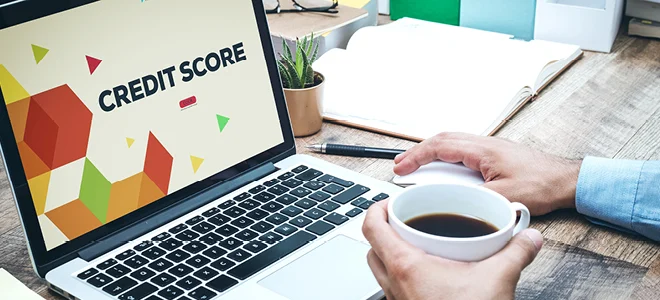How to Manage Your Auto Loan Debt During Covid-19

BySara Korn
UpdatedJul 6, 2025
- Auto repossession is a real threat if you miss payments due to COVID.
- Talk to your lender about forbearance before It's too late.
- Sell or trade for cheaper transportation if necesary.
Table of Contents
Many cash-strapped Americans are really struggling with the questions of how to get by on a reduced income, where to spend the little money they have, and which bills to prioritize. Transportation falls into a gray area — it’s not as important as food, housing, and utilities, but it’s not exactly a luxury either. You still need a way to get around, now and after the pandemic is over.
If you have an auto loan you can’t afford anymore, you have a few options. If you make a decision now, before you start missing payments, you will have more control over the situation. When deciding what to do about your auto loan debt, you basically have three options:
Keep the vehicle and ask your lender for a forbearance
Trade in the vehicle for a less expensive one
Sell the vehicle and use alternate transportation
We’ll dive into those three options in a moment, but first, here are some factors you’ll want to take into account as you’re weighing your options.
Your credit score
If you miss a loan payment without talking to your lender ahead of time, it will show as a missed payment on your credit report, and missed and late payments are damaging to credit scores. That’s one of the reasons it’s important to talk to your lender to see if you can get through this period while maintaining your account in good standing. However, there may be more important things than your credit score that you have to consider, such as…
Your cash flow
If your income has stopped or been reduced, you have to ask yourself: Is a car payment really the best use of the limited cash I have right now? That money could be better spent on essentials like food and shelter.
For now, your credit score is much less important than covering basic needs. But if you have a healthy emergency fund or another source of income you can use for basic needs, you may be able to keep your vehicle a while longer.
Your transportation alternatives
If keeping your vehicle would drain your savings too quickly, then think about letting it go. Consider other alternatives like buying a less expensive car or using public transportation. Unfortunately, until social distancing is relaxed, some of your usual options like ride share companies and carpools are limited.
It’s important to calculate the estimated costs of the transportation alternatives and compare them to having a car. If the savings isn’t significant, then it might not be worth it.
Your repossession fears
For many people, the thought of having their vehicle repossessed is quite embarrassing. But keep in mind that this situation isn’t your fault: You’re doing the best you can in an unexpected situation. It’s OK to admit you can’t afford your vehicle anymore and let it go if needed.
With all of that in mind, now let’s look more closely at your three options so you can pick the one that makes the most sense for your situation.
1. Keep the vehicle and ask your lender for a forbearance
Due to the coronavirus situation, auto lenders are seeing a sharp spike in customers who can’t make their payments. As a result, many lenders have forbearance programs that allow you to keep your loan in good standing by modifying the terms of the loan, at least temporarily. Here are some of the ways they may possibly be willing to work with you:
Lower payments temporarily
Defer payment(s)
Waive interest
Waive late fees
Withhold negative reporting to credit bureaus
Delay repossession
Every lender has different policies, and your lender may or may not be willing to agree to any of the actions listed above. The only way to know is to contact your auto lender directly.
It’s also important to understand the terms of your forbearance agreement and how they could affect you in the future. For example, are they going to waive the entire payment, or just the interest? Will the deferred amount be added to the end of your loan, spread out in future payments, or due in a balloon payment? Get the terms of your new agreement in writing, especially your new payment schedule.
Lenders are getting lots of calls and emails right now, so contact them well before your payment due date, and be prepared to be patient while waiting for them to respond.
2. Trade in the vehicle for a less expensive one
If you have a loan on a newer or more expensive vehicle, you may be able to trade it in for a more affordable one if you have equity in the car — in other words, if the car is worth more than you owe. You will also need to make sure you’d have enough money to buy another car without taking out a loan.
To find out if you have equity in your vehicle, look up the Kelley Blue Book value of your vehicle for both the private-party value and trade-in value. Dealers will give you less for your trade-in than if you were to sell it to a buyer yourself in a private-party sale, so do the calculation below with both the private-party and trade-in values of your vehicle.
Next, check the amount of your auto loan debt. Take the value of your vehicle and subtract the auto loan amount. If it’s a positive number, that’s your equity. If it’s a negative number, your vehicle is worth less than what you owe, and selling or trading it in aren’t good options.
3. Sell the vehicle and use alternate transportation
If you have equity in your vehicle and can sell it at a profit, you can use that money for your alternative transportation and maybe other essential needs as well. Keep in mind that not having a car will also save on gas, insurance, registration fees, and repairs.
Just make sure you add to your budget the new transportation expenses you’ll have, like public transportation, taxi fees, and delivery costs for food or other items.
Whatever you decide to do, take the time to think through all your options, both financially and in terms of how it will affect your health and lifestyle. Do what you need to do to make things work now, and hopefully for the future as well. We don’t know exactly what that future will look like, but as long as you do your best with what you have now, you can rest easy knowing you did everything in your power to make a smart decision about your auto loan debt.
More ways to handle auto loans and other debts
Having a plan for managing your debt can help reduce stress, and it doesn’t have to be complicated. If you’re dealing with other types of debt in addition to your auto loan, we can help with that too. We’ve developed a simple-to-follow guide to help you find the tools you need to move to a better financial future. Get started by downloading our free guide right now.
Learn More:
Need to Skip a Loan Payment Because of COVID-19? Talk to Your Lender Now (Freedom Debt Relief)
How to Prepare for a Recession If You are Already Struggling (Freedom Debt Relief)
What’s a Good Debt-to-Income Ratio (DTI)? (Freedom Debt Relief)
Behind on car payments because of the Coronavirus? (Federal Trade Commission)
Insights into debt relief demographics
We looked at a sample of data from Freedom Debt Relief of people seeking debt relief during June 2025. The data provides insights about key characteristics of debt relief seekers.
Credit utilization and debt relief
How are people using their credit before seeking help? Credit utilization measures how much of a credit line is being used. For example, if you have a credit line of $10,000 and your balance is $3,000, that is a credit utilization of 30%. High credit utilization often signals financial stress. We have looked at people who are seeking debt relief and their credit utilization. (Low credit utilization is 30% or less, medium is between 31% and 50%, high is between 51% and 75%, very high is between 76% to 100%, and over-utilized over 100%). In June 2025, people seeking debt relief had an average of 75% credit utilization.
Here are some interesting numbers:
| Credit utilization bucket | Percent of debt relief seekers |
|---|---|
| Over utilized | 30% |
| Very high | 32% |
| High | 19% |
| Medium | 10% |
| Low | 9% |
The statistics refer to people who had a credit card balance greater than $0.
You don't have to have high credit utilization to look for a debt relief solution. There are a number of solutions for people, whether they have maxed out their credit cards or still have a significant part available.
Personal loan balances – average debt by selected states
Personal loans are one type of installment loans. Generally you borrow at a fixed rate with a fixed monthly payment.
In June 2025, 44% of the debt relief seekers had a personal loan. The average personal loan was $10,718, and the average monthly payment was $362.
Here's a quick look at the top five states by average personal loan balance.
| State | % with personal loan | Avg personal loan balance | Average personal loan original amount | Avg personal loan monthly payment |
|---|---|---|---|---|
| Massachusetts | 42% | $14,653 | $21,431 | $474 |
| Connecticut | 44% | $13,546 | $21,163 | $475 |
| New York | 37% | $13,499 | $20,464 | $447 |
| New Hampshire | 49% | $13,206 | $18,625 | $410 |
| Minnesota | 44% | $12,944 | $18,836 | $470 |
Personal loans are an important financial tool. You can use them for debt consolidation. You can also use them to make large purchases, do home improvements, or for other purposes.
Regain Financial Freedom
Seeking debt relief can be the first step toward financial freedom. Are you struggling with debt? Explore options for debt relief to regain control of your finances. It doesn't matter how old you are or what your FICO score or credit utilization is. Take the first step towards a brighter financial future today.
Show source
Author Information

Written by
Sara Korn
Sara Korn is a freelance writer who enjoys guiding people to helpful solutions and new and better ways of reaching their goals. She loves stories both on screen and on the page, and is passionate about learning, growing, and teaching.

